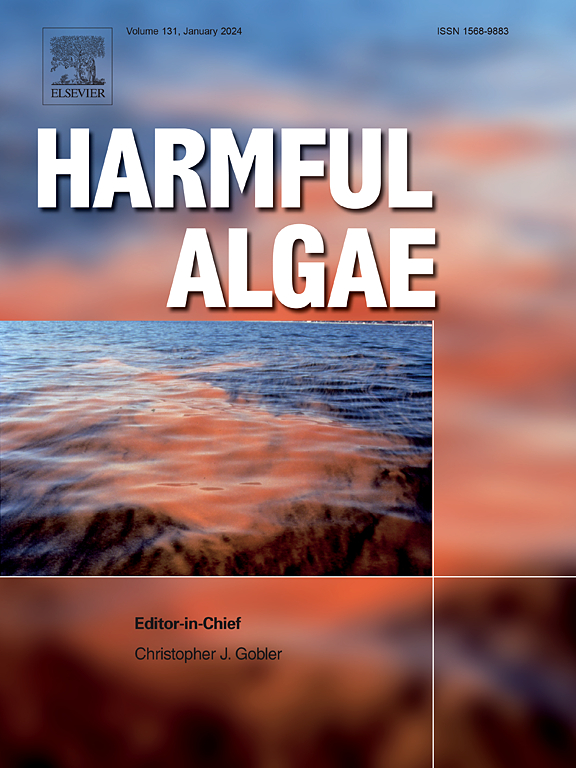What initiates cyanobacterial blooms in the Baltic Sea?
IF 4.5
1区 生物学
Q1 MARINE & FRESHWATER BIOLOGY
引用次数: 0
Abstract
Massive summer blooms of cyanobacteria are a regular feature of the Baltic Sea, with impacts on primary production, nitrogen cycling, food chain structure and bottom layer oxygen deficiency. While many attempts have been made to associate the initiation of those blooms with certain forcing factors, the resulting models have had very limited predictive power. Here we analyse the statistical relationships between the timing of cyanobacteria blooms in the Baltic Sea and various forcing factors. Our analysis is based on a 25-year time series (2000–2024) of satellite-derived frequency of cyanobacteria accumulations (FCA) in 36 characteristic areas. We find that sea surface temperature (SST) does not control the initiation of a bloom but, on the contrary, SST during bloom initiation is a function of the bloom timing. Bloom initiation is associated with increasing SST caused by surface irradiance, coupled with low wind speed that results in reduced vertical mixing. However, while this combination of factors is required, it is not always sufficient to start a bloom, suggesting that additional factors or interactions are required.
是什么引发了波罗的海的蓝藻繁殖?
夏季蓝藻大量繁殖是波罗的海的常规特征,对初级生产、氮循环、食物链结构和底层缺氧产生影响。虽然已经进行了许多尝试,将这些水华的开始与某些强迫因素联系起来,但所得模型的预测能力非常有限。在这里,我们分析了在波罗的海蓝藻繁殖的时间和各种强迫因素之间的统计关系。我们的分析基于25年时间序列(2000-2024年)36个特征区域的卫星衍生蓝藻积聚(FCA)频率。我们发现海水表面温度(SST)并不控制水华的开始,相反,水华开始期间的海温是水华时间的函数。水华的发生与地表辐照度引起的海温增加有关,再加上低风速导致垂直混合减少。然而,虽然这些因素的组合是必需的,但并不总是足以开始开花,这表明需要其他因素或相互作用。
本文章由计算机程序翻译,如有差异,请以英文原文为准。
求助全文
约1分钟内获得全文
求助全文
来源期刊

Harmful Algae
生物-海洋与淡水生物学
CiteScore
12.50
自引率
15.20%
发文量
122
审稿时长
7.5 months
期刊介绍:
This journal provides a forum to promote knowledge of harmful microalgae and macroalgae, including cyanobacteria, as well as monitoring, management and control of these organisms.
 求助内容:
求助内容: 应助结果提醒方式:
应助结果提醒方式:


